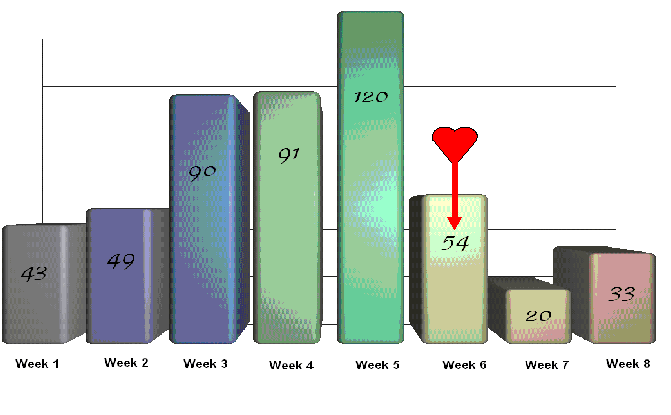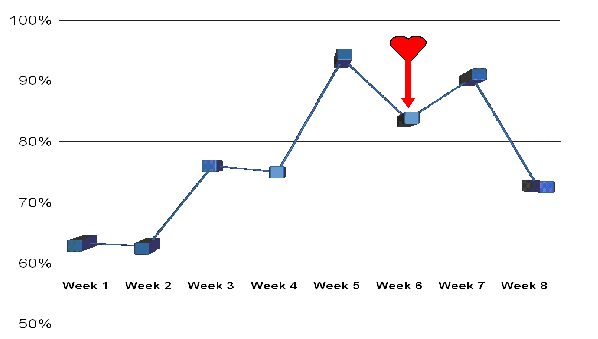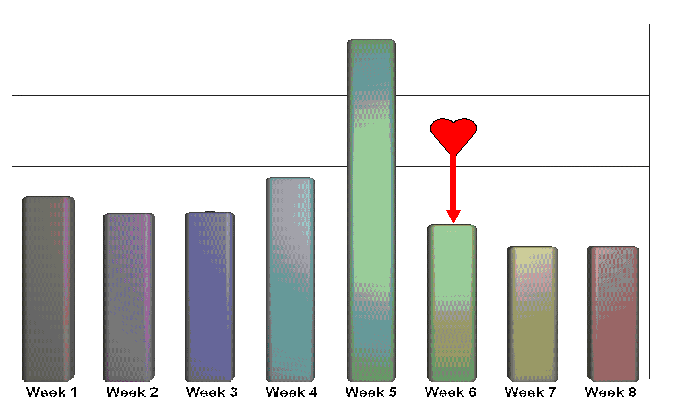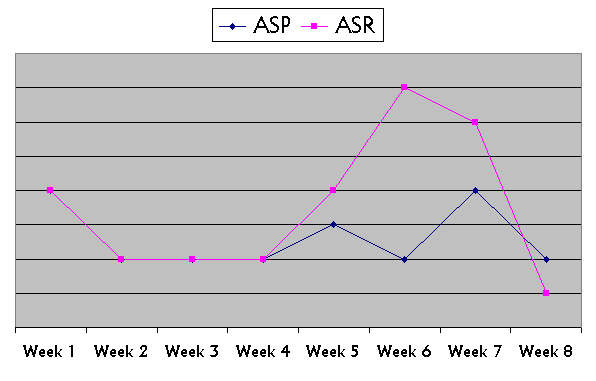10 May 2006
by Jen Cano, eBay Certified Consultant
An important question that an eBay seller should constantly ask is, âWhat are the external factors (trends) happening now or in the near future that might hinder or promote my selling success? This question becomes especially important for those of you whose business revolves around a solid eBay selling strategy.
Some of the market trends that can significantly influence your business strategies are:
* Time of year (seasonal trends)
* Upcoming holidays
* New market entrants
* Economic trends
* Regional or cultural trends
Let´s take one of the most common market trends, a holiday, and take a more in-depth look at how it might influence you as a seller to adjust your strategies to best compensate for its effect.
We´ll start by taking a snapshot of some data that we can analyze for trends and tendencies that might change our selling strategy. For convenience, let´s suppose that I sell Godiva Chocolates on eBay for my business. It´s always helpful to take an adequate timeframe for our data so let´s look at an 8-week snapshot, with data from both the current year and some data from the same timeframe one year ago. The dates we´ll use are listed in the chart below.
Source: HammerTap, 2006
Now that we have a good sample of data, let´s look at the results and what they are trying to tell us. First, I need to know what I´m up against so I´ll want to look at how many auctions were listed with Godiva chocolate as keywords.
The small red heart on the diagrams is a reminder that Valentine´s Day falls in the middle of âWeek 6â in our data. Here is the result:

Source: HammerTap, 2006
1. Most selling ramps up for the holiday approximately three and a half weeks before the holiday, although there are a decent number of auctions even 6 weeks prior.
2. Although eBay items must be shipped to the customer, a good number of auctions are still listed relatively close to the actual holiday.
3. Excepting the week-after slump, it appears that auctions are on the rebound about a week and a half after the holiday.
Now that we know how many auctions were listed, it is important to know how many actually resulted in a sale. The graphic below gives us our answer.

Source: HammerTap, 2006
1. It appears that with chocolate, the early bird doesn´t always get the worm. Early auctions have the worst rate of success.
2. It is important to note that the week before the holiday is great for auction success as most anyone would anticipate, what is unexpected is the fact that the week after the holiday is also very good for auction success. This is likely due to the fact that many sellers don´t believe there will be buyers still interested and therefore don´t list. Those with the tenacity to keep on listing even after the holiday are reaping the rewards of this error made by the competition!
3. We see here a trend that is somewhat unique to Valentine´s Day in that when the actual holiday falls on a weekday, some people will âcelebrateâ the holiday on the weekend before while others will wait for the weekend after. In 2005, Valentine´s Day was on Monday, and so that might be pushing some of the success to the week prior, while others celebrating the weekend after are pushing up success in the week after.
Let´s look at sales price and see what secrets the data might reveal.

Source: HammerTap, 2006
1. On average sales price really isn´t fluctuating much excepting the week prior to the holiday. What does that mean? Sellers should note that their profit will likely be the same for successful auctions both before and after the week prior to the holiday.
As a final example of how holiday trends might influence the market, lets look at the best ending date for each of the weeks in our study.

Source: HammerTap, 2006
1. The best ending date for auction success (ASR) follows closely with the best ending date for the highest average selling price (ASP) before and after the holiday. We see that in the three weeks surrounding the holiday, however, that the best ending date for success clearly differs from the best ending date for generating the highest profit. This type of analysis is of tremendous benefit to those who either have a lot of product to sell and need their auctions to close, as well as to sellers who want to make the highest possible profit on each auction.
To end our case study lets look at the week of Valentine´s Day from both this year as well as one year ago and see if there are any trends that might help a seller develop solid strategies for the future.
An important question that an eBay seller should constantly ask is, âWhat are the external factors (trends) happening now or in the near future that might hinder or promote my selling success? This question becomes especially important for those of you whose business revolves around a solid eBay selling strategy.
Some of the market trends that can significantly influence your business strategies are:
* Time of year (seasonal trends)
* Upcoming holidays
* New market entrants
* Economic trends
* Regional or cultural trends
Let´s take one of the most common market trends, a holiday, and take a more in-depth look at how it might influence you as a seller to adjust your strategies to best compensate for its effect.
Valentine´s Day: Strategies for Success
We´ll start by taking a snapshot of some data that we can analyze for trends and tendencies that might change our selling strategy. For convenience, let´s suppose that I sell Godiva Chocolates on eBay for my business. It´s always helpful to take an adequate timeframe for our data so let´s look at an 8-week snapshot, with data from both the current year and some data from the same timeframe one year ago. The dates we´ll use are listed in the chart below.
Figure 1: Week by Week Legend
| Week | Days | Start | End |
| Week 1 | 8 Days | Wednesday, January 4, 2006 | Wednesday, January 11, 2006 |
| Week 2 | 7 Days | Thursday, January 12, 2006 | Wednesday, January 18, 2006 |
| Week 3 | 7 Days | Thursday, January 19, 2006 | Wednesday, January 25, 2006 |
| Week 4 | 6 days | Friday, January 27, 2006 | Wednesday, February 1, 2006 |
| Week 5 | 7 days | Friday, February 4, 2005 | Thursday, February 10, 2005 |
| Week 6 | 7 days | Friday, February 11, 2005 | Thursday, February 17, 2005 |
| Week 7 | 6 days | Friday, February 18, 2005 | Thursday, February 24, 2005 |
| Week 8 | 8 days | Friday, February 25, 2005 | Friday, March 4, 2005 |
Now that we have a good sample of data, let´s look at the results and what they are trying to tell us. First, I need to know what I´m up against so I´ll want to look at how many auctions were listed with Godiva chocolate as keywords.
The small red heart on the diagrams is a reminder that Valentine´s Day falls in the middle of âWeek 6â in our data. Here is the result:
Figure 2: Number of Auctions

Source: HammerTap, 2006
Trends in Number of Auctions Listed
1. Most selling ramps up for the holiday approximately three and a half weeks before the holiday, although there are a decent number of auctions even 6 weeks prior.
2. Although eBay items must be shipped to the customer, a good number of auctions are still listed relatively close to the actual holiday.
3. Excepting the week-after slump, it appears that auctions are on the rebound about a week and a half after the holiday.
Now that we know how many auctions were listed, it is important to know how many actually resulted in a sale. The graphic below gives us our answer.
Figure 3: Auction Success Rate

Source: HammerTap, 2006
Auction Success Rate Trends
1. It appears that with chocolate, the early bird doesn´t always get the worm. Early auctions have the worst rate of success.
2. It is important to note that the week before the holiday is great for auction success as most anyone would anticipate, what is unexpected is the fact that the week after the holiday is also very good for auction success. This is likely due to the fact that many sellers don´t believe there will be buyers still interested and therefore don´t list. Those with the tenacity to keep on listing even after the holiday are reaping the rewards of this error made by the competition!
3. We see here a trend that is somewhat unique to Valentine´s Day in that when the actual holiday falls on a weekday, some people will âcelebrateâ the holiday on the weekend before while others will wait for the weekend after. In 2005, Valentine´s Day was on Monday, and so that might be pushing some of the success to the week prior, while others celebrating the weekend after are pushing up success in the week after.
Let´s look at sales price and see what secrets the data might reveal.
Figure 3: Average Sales Price

Source: HammerTap, 2006
Average Sales Price Trends
1. On average sales price really isn´t fluctuating much excepting the week prior to the holiday. What does that mean? Sellers should note that their profit will likely be the same for successful auctions both before and after the week prior to the holiday.
As a final example of how holiday trends might influence the market, lets look at the best ending date for each of the weeks in our study.
Figure 4: Best Ending Date

Source: HammerTap, 2006
Ending Date Trends
1. The best ending date for auction success (ASR) follows closely with the best ending date for the highest average selling price (ASP) before and after the holiday. We see that in the three weeks surrounding the holiday, however, that the best ending date for success clearly differs from the best ending date for generating the highest profit. This type of analysis is of tremendous benefit to those who either have a lot of product to sell and need their auctions to close, as well as to sellers who want to make the highest possible profit on each auction.
To end our case study lets look at the week of Valentine´s Day from both this year as well as one year ago and see if there are any trends that might help a seller develop solid strategies for the future.



 Source: HammerTap, 2006
Source: HammerTap, 2006